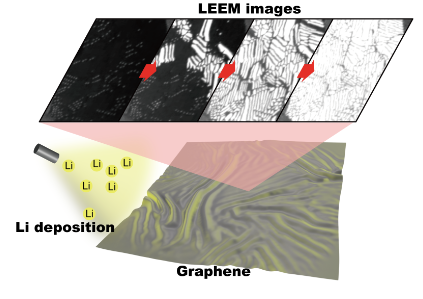DATE2023.07.25 #Press Releases
Lithium ions in graphene sandwich for better batteries and memory devices?
Researchers reveal how to insert lithium ions between graphene layers for potential applications in lithium-ion batteries and electronic devices.
July 25, 2023
Graphene is a thin layer of carbon atoms held by a weak electric force called the van der Waals force. Lithium-ion batteries which power most of your electronic devices and electric vehicles use graphene-stacked graphite as electrodes. To charge and discharge the battery, Lithium ions penetrate between the graphene layers. Such ions penetrating thin atomic layer materials such as graphene can change the material properties in various ways. But how they do that has been a mystery. A new study from researchers at the University of Tokyo reveals that the way the Lithium ions penetrate depends on the stacking pattern of graphene layers.
Think of the graphene layers as cheese slices with holes. Lithium-ion can pass through the holes, but it depends on how the different layers of cheese are stacked. Moreover, the insertion of the ions changes the stacking structure of the ‘cheese layers’ to more stable ones.
The researchers deposited Lithium atoms in graphene layers under a vacuum condition. Then they ionized the lithium and inserted the ions between the carbon atom layers of the graphene (a process called intercalation). Using a low-energy electron microscope, they captured the dynamics of the lithium-ion intercalation process.
The findings from this study will open new ways to control the stacking structure of thin atomic layer materials such as graphene. It may have potential applications in memory devices and research on atomic layer materials other than graphene.

Figure: The intercalation of lithium ions in graphene layers. LEEM stands for low-energy electron microscopy.
For more details, please check out the research article:
Yukihiro Endo, Xue Yan, Meng Li, Ryota Akiyama, Christian Brandl, Jefferson Zhe Liu, Rei Hobara, Shuji Hasegawa, Weishi Wan, K. S. Novoselov and Wen-Xin Tang. 2023. Dynamic topological domain walls driven by lithium intercalation in graphene. Nature Nanotechnology. DOI: 10.1038/s41565-023-01463-7


